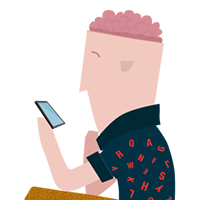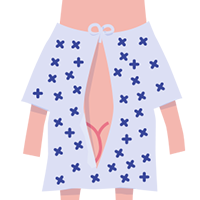
More women get it, but more men die from it
Skin Cancer
Non-Melanoma Skin Cancer is one of the most common Cancers in the world.
More women get Skin Cancer, but more men die from it. This is a pretty shocking situation we find ourselves in, and it’s likely that men let symptoms slide instead of getting them checked out earlier.
Skin Cancer is generally split into two groups; Melanoma and Non-Melanoma. Non-Melanoma Skin Cancer is one of the most common Cancers in the world and develops slowly in the upper layers of the skin.
Melanoma is a far more serious type of Cancer that starts in the skin and can spread to other areas of the body. Ever been told to keep an eye on any moles on your body? This is the type of Skin Cancer we’re talking about.
Melanoma is still a bit on the rare side, but it’s becoming more common with almost 13,000 new cases found in the UK each year.
6,000 men are diagnosed with Skin Cancer in the UK every year
27% of those diagnosed are under 50, with an average of 45% of cases found in those 65+
Melanoma is one of the most common Cancers in people aged 15 – 34
95% of men survive Melanoma at least 1 year, with 83% survivng 5 years and 79% surviving 10 years
Prevention
Both Melanoma and Non-Melanoma Skin Cancers are linked to overexposure to ultraviolet light. Translation? Stay away from sunbeds and sunlamps, and if you’re going to be spending time out in the sun then slap on some sunscreen.
You know what’s a better look than a tan? Being alive.
Symptoms
Melanoma and Non-Melanoma Skin Cancers are likely to produce different symptoms, so you should keep an eye out for any of these – and if you spot anything unusual, get it checked out by your GP.
Common Melanoma symptoms involve a new mole sprouting up, or an existing mole changing in appearance. Keep an eye out for moles that:
- Have an irregular shape
- Have a ragged or notched border
- Are a mix of two or more colours
- Are larger than 6 mm in diameter
- Change how they look over time
Symptoms for Non-Melanoma Skin Cancers can include:
- A lump or discoloured patch on the skin that doesn’t heal
- A spot or sore that doesn’t heal within 4 weeks
MOT
Skin Cancers found and removed early are almost always curable, so it’s well worth giving yourself monthly head-to-toe exams so you can find any new or changing lumps or moles that may be cancerous (or precancerous).
Here’s a quick guide to checking yourself…
- Use a mirror and examine your face, have a good look at your nose, lips, mouth and ears (front and back) in particular
- Give your scalp a onceover using a hairdryer and mirror to expose each section
- Check your hands, palms, backs, between the fingers and under the fingernails
- Continue up the wrists to check both the front and back of your forearms
- Stand in front of a mirror and check your elbows and all the sides of your upper arms (including the underarms)
- Next take a look at the neck, chest and torso
- Use your full length mirror and a hand mirror to check the back of your neck, shoulders and upper back
- Still using both mirrors, inspect your lower back, bum and the back of your legs
- Take a seat and use the hand mirror to check your privates
- While still sitting, check the fronts and sides of both legs
- Finally inspect your ankles, tops of feet, between your toes, under the toenails and the soles of your feet
If you spot anything unusual, visit your GP so they can check it out. They may then refer you to have a biopsy to investigate further.












